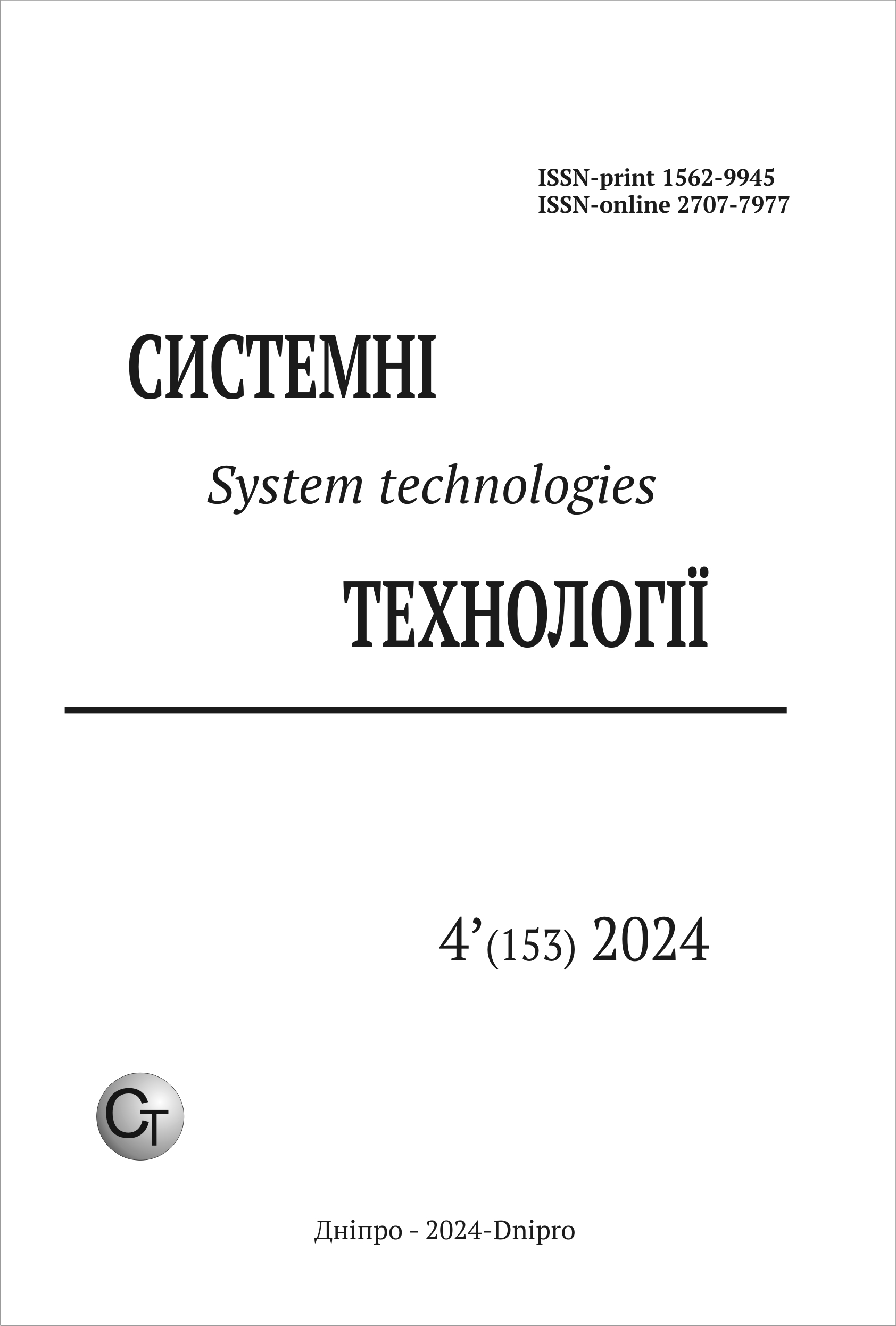АДАПТИВНИЙ ПІДХІД ДО ВИЗНАЧЕННЯ СТАНУ ВУЛИКА ЗА ДОПОМОГОЮ НЕЙРОННИХ МЕРЕЖ ТА АНАЛІЗУ АУДІО
DOI:
https://doi.org/10.34185/1562-9945-4-153-2024-01Ключові слова:
нейронні мережі, бджоли, глибоке навчання, аналіз аудіо, tensorflow, згорткові нейронні мережі, mfccs, stft.Анотація
У сучасному бджільництві ідентифікація присутності матки в вулику є важливим завданням, що впливає на здоров'я та продуктивність бджолиної колонії. Розвиток методів машинного навчання, зокрема згорткових нейронних мереж, відкриває нові можливості для автоматизації цього процесу. Ця стаття фокусується на ви-користанні нейронних мереж та способів виділення характеристик аудіоданих MFCCs та STFT для ідентифікації стану відсутності матки у вулику, а також огляд можли-востей використання навчених моделей на даних з інших вуликів. Результати дослі-дження демонструють, що MFCCs є більш універсальним способом обробки даних для цієї мети, порівняно з STFT, який показав позитивні результати на першому наборі да-них, але не показав значних результатів на другому. Також, використання навченої моделі з використанням MFCC на обмеженому наборі даних показало кращий резуль-тат ніж повне навчання моделі на цих даних.
Посилання
Kremen C., Williams N. M., Thorp R. W. Crop pollination from native bees at risk from agricultural intensification. Proceedings of the National Academy of Sciences. 2002. Vol. 99, no. 26. P. 16812–16816.
URL: https://doi.org/10.1073/pnas.262413599 (date of access: 31.03.2024).
Netting and pan traps fail to identify the pollinator guild of an agricultural crop / K. J. Boyer et al. Scientific Reports. 2020. Vol. 10, no. 1. URL: https://doi.org/10.1038/s41598-020-70518-9 (date of access: 31.03.2024).
Beyer N., Kulow J., Dauber J. The contrasting response of cavity‐nesting bees, wasps and their natural enemies to biodiversity conservation measures. Insect Conservation and Diversity. 2023. URL: https://doi.org/10.1111/icad.12638 (date of access: 31.03.2024).
Kviesis A., Zacepins A. Application of neural networks for honey bee colony state identification. 2016 17th International Carpathian Control Conference (ICCC). 2016. P. 413–417.
Marstaller J., Tausch F., Stock S. DeepBees - Building and Scaling Convolutional Neuronal Nets For Fast and Large-Scale Visual Monitoring of Bee Hives. 2019 IEEE/CVF International Conference on Computer Vision Workshop (ICCVW), Seoul, Korea (South), 27–28 October 2019. 2019.
URL: https://doi.org/10.1109/iccvw.2019.00036 (date of access: 31.03.2024).
Sledevic T. The Application of Convolutional Neural Network for Pollen Bearing Bee Classification. 2018 IEEE 6th Workshop on Advances in Information, Electronic and Electrical Engineering (AIEEE), Vilnius, 8–10 November 2018. 2018. URL: https://doi.org/10.1109/aieee.2018.8592464 (date of access: 31.03.2024).
NeuralBee - A Beehive Health Monitoring System / Y. Mahajan et al. 2023 International Conference on Communication System, Computing and IT Applications (CSCITA), Mumbai, India, 31 March – 1 April 2023. 2023. URL: https://doi.org/10.1109/cscita55725.2023.10104935 (date of access: 31.03.2024).
Varroa Mite Detection Using Deep Learning Techniques / J. Divasón et al. Lecture Notes in Computer Science. Cham, 2023. P. 326–337. URL: https://doi.org/10.1007/978-3-031-40725-3_28 (date of access: 31.03.2024).
Kirchner W. H. Acoustical communication in honeybees. Apidologie. 1993. Vol. 24, no. 3. P. 297–307. URL: https://doi.org/10.1051/apido:19930309 (date of access: 31.03.2024).
Detection of the Bee Queen Presence Using Sound Analysis / T. Cejrowski et al. Intelligent Information and Database Systems. Cham, 2018. P. 297–306. URL: https://doi.org/10.1007/978-3-319-75420-8_28 (date of access: 31.03.2024).
Use of LSTM Networks to Identify “Queenlessness” in Honeybee Hives from Audio Signals / S. Ruvinga et al. 2021 17th International Conference on Intelligent Environments (IE), Dubai, United Arab Emirates, 21–24 June 2021. 2021. URL: https://doi.org/10.1109/ie51775.2021.9486575 (date of access: 31.03.2024).
Nolasco I., Benetos E. To bee or not to bee: Investigating machine learning approaches to beehive sound recognition. Workshop on Detection and Classification of Acoustic Scenes and Events (DCASE). 2018.
A preliminary study of sounds emitted by honey bees in a beehive / S. Cecchi et al. Audio Engineering Society Convention 144. 2018.
Verma P., Das P. K. i-Vectors in speech processing applications: a survey. International Journal of Speech Technology. 2015. Vol. 18, no. 4. P. 529–546. URL: https://doi.org/10.1007/s10772-015-9295-3 (date of access: 31.03.2024).
Завантаження
Опубліковано
Номер
Розділ
Ліцензія
Авторське право (c) 2024 Системні технології

Ця робота ліцензується відповідно до ліцензії Creative Commons Attribution 4.0 International License.















